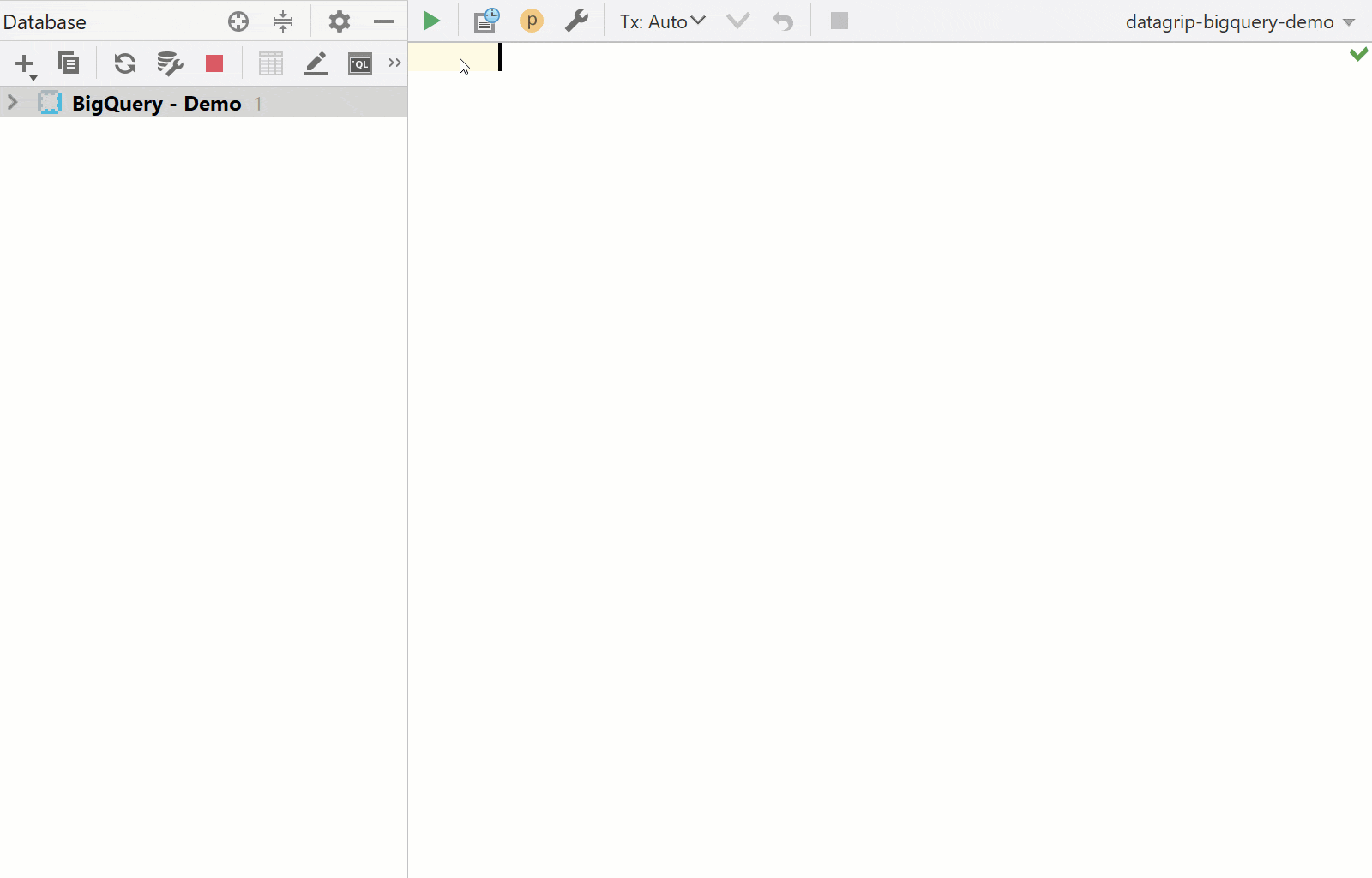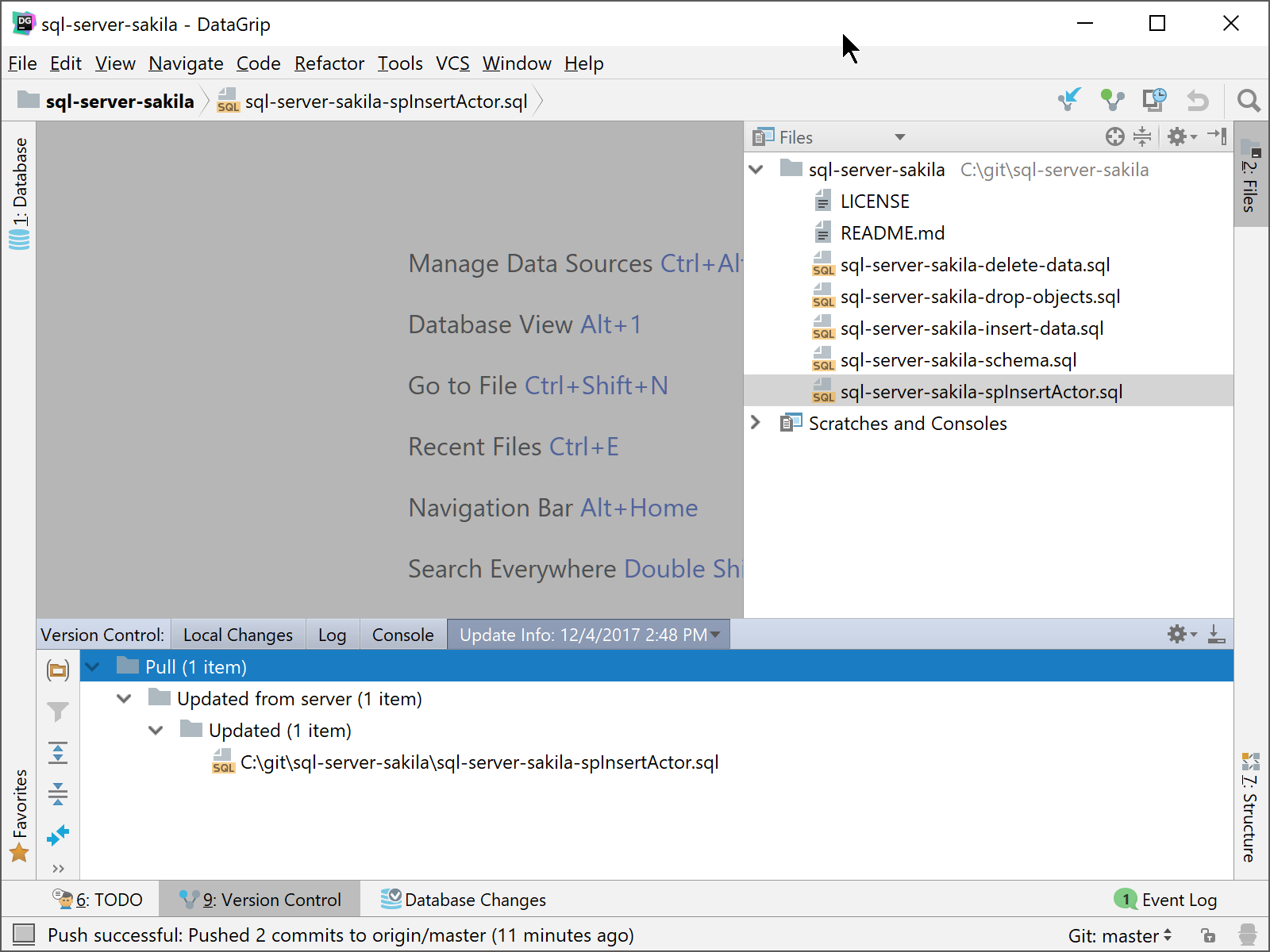
See the "Getting Started" chapter of the help documentation for a guide to using OAuth.įor assistance in constructing the JDBC URL, use the connection string designer built into the BigQuery JDBC Driver. In addition to the OAuth values, you will need to specify the DatasetId and ProjectId. To authenticate with a service account, you will need to register an application to obtain the OAuth JWT values. OAuth also enables you to use a service account to connect on behalf of users in a Google Apps domain. To access Google APIs on behalf of individual users, you can use the embedded credentials or you can register your own OAuth app. Google uses the OAuth authentication standard. The syntax of the JDBC URL is jdbc:googlebigquery: followed by the connection properties in a semicolon-separated list of name-value pairs.
BIGQUERY DATAGRIP DRIVER
Driver: Select the driver you just created.ĭatabase URL: Enter the full JDBC URL.If you selected the "No Wizard" option, select the Generic or Auto Detect option in the Database Type menu. Database Type: If you selected the wizard option, the database type is automatically detected.In the Connection section, set the following options: In the Database tab, right-click the Database Connection node and click Create a Database Connection.In the Driver Class menu, select the GoogleBigQueryDriver class, .ĭefine the Connection to the JDBC Data Sourceįollow the steps below to save connection properties in the JDBC URL.LIMITĭataGrip supports the LIMIT clause.In the User Specified tab, click the Open File button and select the file, located in the lib subfolder of the installation directory. Instead of ORDER BY, you can use SORT BY. ORDER BYĭataGrip supports the ORDER BY clause. HAVINGĭataGrip supports the HAVING clause. You can use embedded fields of a column in the SELECT clause if the column is used in the GROUP BY clause. The SELECT clause may include expressions that functionally depend on expressions in the GROUP BY clause. LIKE and NOT LIKE require a string literal. Table names and aliases must not have duplicates in JOIN clauses. You cannot use a SELECT statement as the second argument in JOIN clauses. You can use = or = operators in the ON condition. The following query will result in error: Only JOIN (INNER JOIN) and LEFT JOIN (LEFT OUTER JOIN) are supported. For example, the following query is valid: You must use an alias for a nested SELECT statement. Consider the following example.Ĭolumns may have aliases. The following features are supported for the SELECT queries.Īccess to embedded fields by using dotted names.

These wildcards are translated into a valid regular expression for MongoDB.

You can use wildcards for the LIKE operator. Operands: =, =, >=,, , !=, +, -, /, *, %, AND, OR, NOT, LIKE, NOT LIKE, IS, IS NOT, IN, NOT IN, BETWEEN, NOT BETWEEN. You cannot call aggregate functions within other aggregate functions.Ĭurrently, the following functionality is supported: In SQL, there is no such dependency, and you can use aggregate functions without the GROUP BY clause (for example, SELECT AVG(x) FROM t). They are aggregate if they are placed in the group block.

In MongoDB, functions like AVG, SUM, MIN, and MAX may be aggregate and non-aggregate. For example, SELECT MAX(1,2,3) will not work. Limitationsĭue to different approaches to aggregate functions in SQL and MongoDB, you cannot use aggregate functions, such as AVG, SUM, MIN, and MAX, as non-aggregate. You can see the list of all the pipeline operators that support named parameters in Aggregation Pipeline Operators at.


 0 kommentar(er)
0 kommentar(er)
